Undeniably, winter is the best time to visit Yellowstone. Geysers throw steaming water through the snow and into the robin egg sky. Elk and bison, followed by wolves and coyotes, fill the valleys. Crystals of snow sparkle in the low light, turning meadows and sagebrush flats into fairylands. And best of all, the crowds die way down when compared with summer.
Most of the roads in Yellowstone are closed to general traffic in winter. But the northern part of the park, including Mammoth Hot Springs, remains easily accessed through the north entrance in Gardiner, Montana. From Mammoth, trails sprawl out across the park, just begging to be explored.
Rent snowshoes at the Bear Den Ski Shop in the trailer in front of the Mammoth Hotel. Even if you have your own gear, it’s a good idea to check in at the rental trailer and find out what the conditions are like for any given day.
Some of the trails in Yellowstone are groomed for snowshoeing and cross-country skiing, but there are plenty of places to take off and explore. Avoid thermal areas, except on trails or boardwalks—the crust is thin and it’s easy to break through and scald yourself. Orange metal markers mark many of the trails, but may be difficult to find in winter, and if you get caught in a whiteout or blizzard things can quickly get sketchy.
A smart snowshoer knows the risks and takes caution, but doesn’t let them stop him or her from a Mammoth Adventure in Wonderland.
After a day, or an hour, on the trail, stop in at the Mammoth Dining Room, or the Mammoth Hotel coffee cart for hot cocoa and kicking back. When you really want to relax, soak in the Boiling River while watching ice chunks float by and dippers swim beneath the currents.
Upper Terrace Drive
In summer, this 1.5-mile loop around the Upper Mammoth Terraces allows families to see beautiful hot springs without leaving their car. In winter, it gets even better—the road is closed to vehicles and open to bipedal travelers (quadrupeds, too!). Park at the Upper Terrace Parking area, about 1.7 miles south of Liberty Cap on the Grand Loop Road. Head to the left on the loop and up a couple hills. Pass Angel Terrace, White Elephant Back Terrace, and the Snow Pass trailhead before heading downhill to Orange Spring Mound. The road winds around past Highland Terrace and Prospect Terrace. You’ll have views of the lower terraces and historic Fort Yellowstone as you come upon the overlook. From there, take the snowshoes off and walk down the boardwalk to Canary Spring. Upon returning to the road, continue in the same direction and return to the parking area.
Stay on the road and designated trails, as tempting as the hot springs look, they will burn your skin off.
Beaver Ponds Loop
The 5.0-mile loop trail starts between Liberty Cap and the stone house next to the Mammoth Terraces. From there, it climbs 350 feet above Clematis Gulch. This is the narrowest, and trickiest part of the trail. At 0.7 miles turn right at the junction with the Sepulcher Mountain Trail. A few more minutes of uphill slog and the trail levels out. It’s an easy stroll through meadows, trees, and snow-covered ponds. Look for the blazes on the trees to keep to the trail. After winding around the big beaver pond, cross a bridge, and soon walk out into open sage/grasslands and back to Mammoth. The trail ends behind the Mammoth Hotel. You may want to pop in for hot chocolate before heading back to your car.
Indian Creek Loop
To get to the Indian Creek Loop, you’ll need a reservation on a snowcoach shuttle since the Grand Loop Road is closed at the Upper Terrace parking lot. Call the Mammoth Hotel (307) 344.5600 to get yourself a seat.
Several trails start at or near the Indian Creek Campground and there is a small warming hut there. For the 2.2-mile Indian Creek Loop start at the hut and follow the road through the campground and onto the Bighorn Pass Trail. About 0.5 miles further, turn left (south) to stay on the Indian Creek Loop. Continue along a power line corridor through rolling lodgepole pines for about 0.75 miles before the trail descends to Obsidian Creek. Follow the creek north, back to the hut. Along the way, enjoy views of the Gallatin Range and Bunsen Peak.
Boiling River
You won’t need your snowshoes, just follow the packed path 0.5 miles to the sweet spot where the Boiling River flows into the Gardiner River, creating perfect soaking pools. Hot water flows over travertine ledges creating little waterfalls and habitat for colorful algae and bacteria. There aren’t any changing rooms, so most people wear their swimsuits under their clothes and change under a towel for the walk back. Bring water shoes for the walk down the river to the pools.
Drive two miles north from Mammoth Hot Springs on Route 89. Just after entering Montana, and before crossing the river, turn right into the dirt pullout for Boiling River. There is an outhouse at the trailhead.

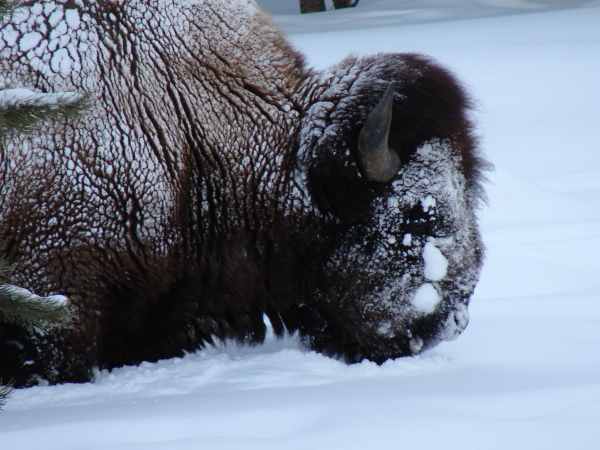
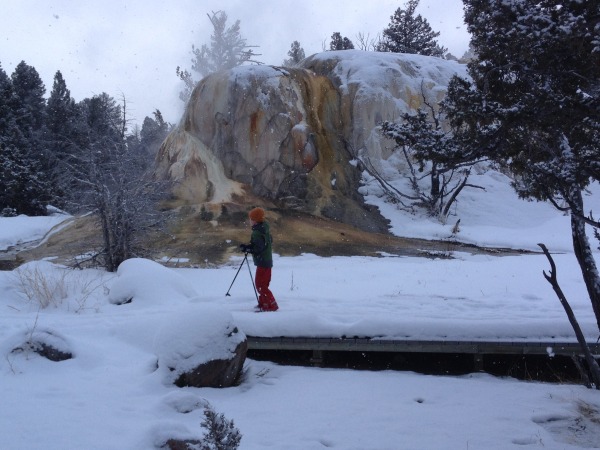
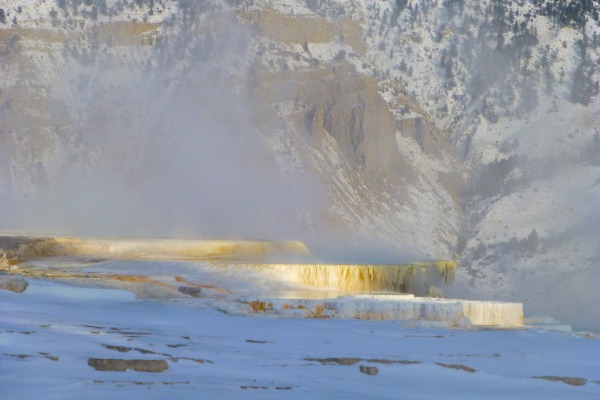
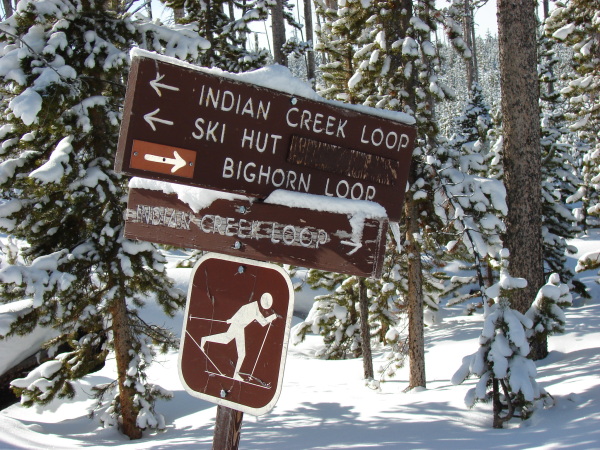
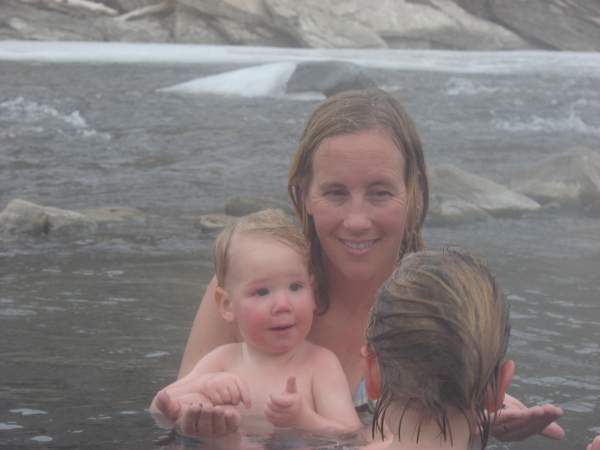
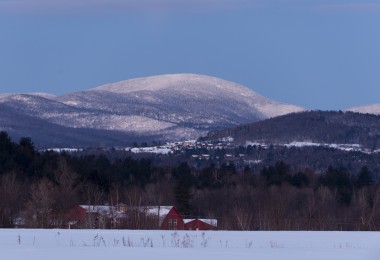
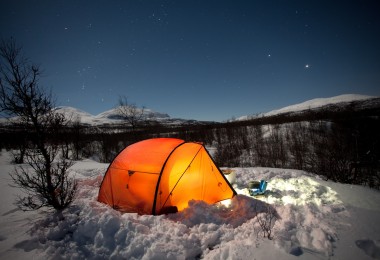
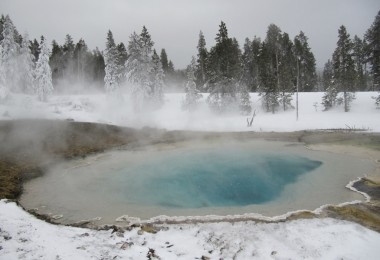
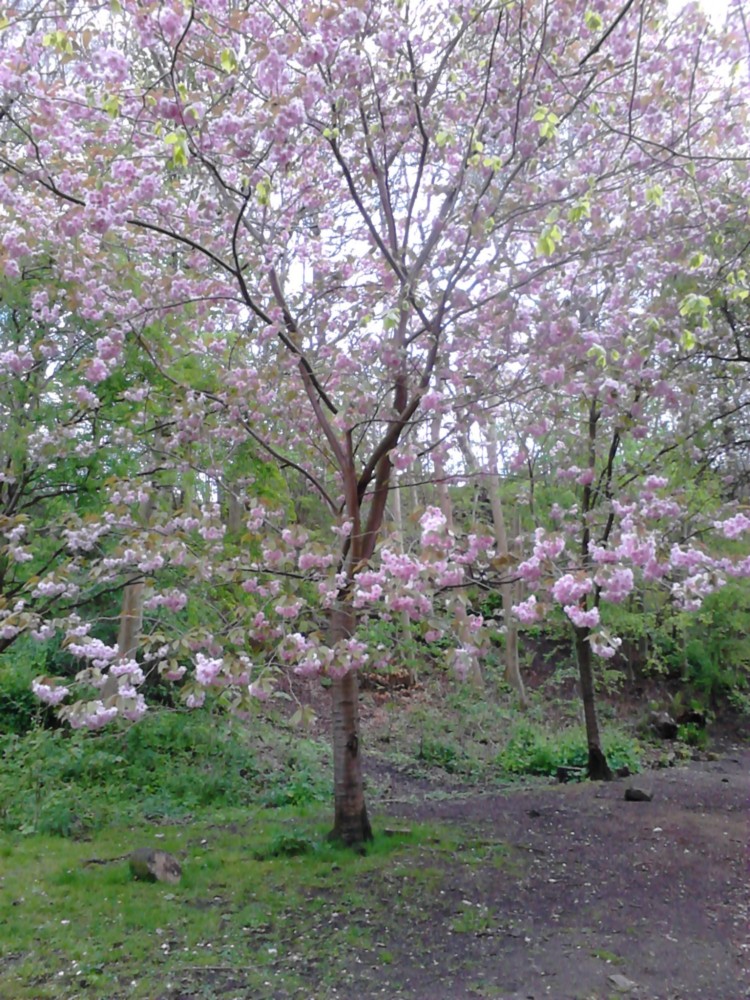

Leave a Comment